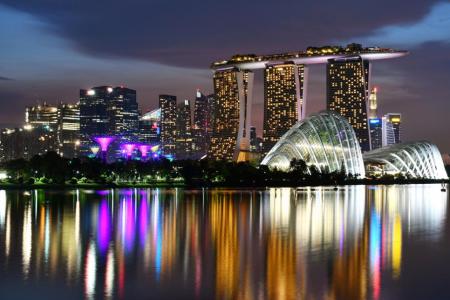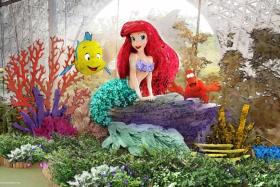Protecting Brand Singapore's X factor
We must continue to promote and revamp our brand to remain relevant and attractive
Going by headline indicators, Singapore's country brand looks strong enough.
The Lion City tops the world in "online presence" in the Global Cities Index released this month. In the 2016 Soft Power 30 ranking of countries by their soft power, Singapore moved up two places to break into the top 20.
But what fresh challenges lie in wait, in this new world of Brexit and Mr Donald Trump? How well does Singapore stand in promoting and protecting its international reputation so as to continue to boost its magnetic pull for the choicest investments, trade, tourism and talent?
Singapore was "reset" several times in the last six years with game-changing developments - including two general elections, SG50 and SG100, the passing of Mr Lee Kuan Yew and the ruling party's policy shift to more left-of-centre.
The most important change, to me, has been how the SG50 year of 2015 transformed the mindsets of Singapore's people in their idea of Brand Singapore and in their relationship to it. Any aspiring global city would be better-placed to be one if more of its citizens are aware of what a country brand entails and have considered that they might themselves contribute to it in some way someday.
Before 2015, most Singaporeans saw country brand-building as the domain of civil servants. Expressive patriotism was essentially only for a day each Aug 9. But SG50 changed all that, with hundreds of official ground-up initiatives and many other independent projects celebrating the nation's golden jubilee, and, along with it, who Singaporeans are as a people and what kind of society they want.
Heritage items, from dragon playgrounds to childhood candy snacks, were embraced like never before. The nation's journey of independence was contemplated anew, amplified by the added emotive trigger of the loss of the founding prime minister.
At the same time, there was SG100, an effort to look ahead towards 2065 that fostered a novel super long-term focus on a shared future. What this has done is to swop what would naturally be an immediate, self-centred perspective into a more considered outlook on the way ahead together with fellow citizens.
SG50 and SG100 had already revamped the idea of Brand Singapore from an individual perspective, but this was sealed when Joseph Schooling won the Republic's first Olympic gold medal in 2016. No longer could one suggest that Singapore was too small an island for its people to dream such big dreams.
The old, limiting "sampan" mentality has finally given way to imagining the country as something inspiring greater confidence - like a small cruise ship, perhaps? In these key ways, the national psyche has changed forever. For now, the basic aspects of Brand Singapore are well accounted for.
Singapore's "traditional" value propositions - such as public safety and administrative efficiency - are still humming, in general. Political stability has been enhanced even more deeply, with the ruling party's new social policies, such as those for the Pioneer Generation, removing much of the contention arising around the 2011 election and sweeping to a resounding ground shift in 2015.
SELF-CONFIDENCE
Singaporeans' soft power self-confidence is also on a high. One could point to the "regionalisation" of Singapore arts, with Singaporean films like Pop Aye (set in Thailand) and Ilo Ilo and Unlucky Plaza (with their Filipino references).
For the future, as the world today is seeing a reassertion of hard power, from dismantling multilateral trade pacts to realigning geo-strategic security relationships, where does this leave Singapore?
Several years ago, a national review of Brand Singapore recommended that the country find an X factor to celebrate above all, to set it apart from the global competition.
For this, my vote goes to multiculturalism, as seen in Singapore's exceptional social harmony, from its unusual policies like ethnic quotas in public housing to its cultural globalism and warm welcome to outsiders and outside influences. These are increasingly valuable assets of social sustainability.
My favourite metaphor for this X factor is the Flower Dome of Gardens by the Bay that houses plants from around the world, where - just as with Singapore itself - excellent, careful management of the total infrastructure and environment sustains a conducive living environment that is globally attractive.
Of course, tensions remain and must be managed, including a similar tussle between the haves and have-nots of globalisation now plaguing countries such as the UK and US, as well as emerging divides motivated by differences in value systems.
But across a globe currently recalibrating, and retreating from diversity, I believe Singapore's inclusive multiculturalism and openness to the world will keep it going as Asia's leading global city.
The writer is the author of the just-published Brand Singapore: Nation Branding After Lee Kuan Yew, In A Divisive World. This is an abridged article that was published in The Business Times yesterday.
Get The New Paper on your phone with the free TNP app. Download from the Apple App Store or Google Play Store now


